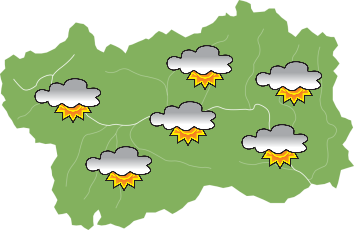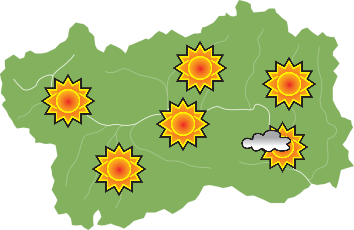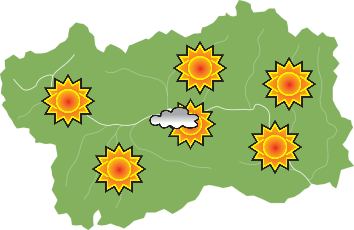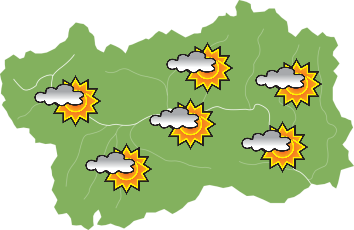The museum is closed from 26th November to 4th December 2025
The Regional Museum of Natural Sciences Efisio Noussan offers a unique experience in the heart of a historic castle, where history and nature intertwine.
The dual-perspective visit allows you to explore both the castle’s history, discovering preserved features like fireplaces, furnishings, decorations, and coats of arms, and the flora, fauna, and natural environment of the Aosta Valley through interactive and multimedia exhibits.
You can also see the Lyskamm marmot, considered the oldest mummified find in Italy.
The museum visit includes 16 rooms spread across the ground floor and two upper levels.
1 - Hall of Coats of Arms
Discover the castle’s origins and noble coats of arms through virtual reconstructions.
2 - Hall of Differences: from vineyards to the North Pole
The Aosta Valley boasts extraordinary biodiversity. From the vineyards of the lower valley to the glaciers of Mont Blanc, the landscape mirrors a journey from the Mediterranean to the Arctic. The exhibit highlights various altitudinal zones, protected areas, natural parks, and alpine botanical gardens.
3 - Hall of Time: the old Natural Sciences Museum
Learn the history of the museum, from its founding to today, through historical exhibits and original furnishings.
4 - Hall of Rocks: the stories they tell
Explore the Alpine geology of the Aosta Valley. Discover granite from Mont Blanc, gneiss from Gran Paradiso, the sharp lines of the Matterhorn, and the dolomitic forms of Cime Bianche through rock samples and virtual interviews with geologists.
5 - Hall of Mines
Located in the basement, this room delves into the region's mining tradition and its historical significance.
6 - Hall of Slopes: the sunny side and the shady side
The differing exposures to sunlight, known as adret (sunny) and envers (shady), create contrasting microclimates, shaping ecosystems and agricultural practices.
7 - Hall of the “Abbés Savants”
A tribute to the scholar-priests who advanced natural knowledge in the Aosta Valley.
8 - Noussan Hall
Dedicated to the museum’s founder, Efisio Noussan, and his passion for the region's natural heritage.
9 & 10 - Halls of Water: the creative force
Explore the vital role of water, from glaciers to mountain springs, alpine lakes, and waterfalls. Dioramas and an immersive soundscape capture the essence of water's presence.
11 - Hall of the Forest: the secret life
Take a night-time stroll through a recreated mountain forest, surrounded by the sounds and shadows of its hidden inhabitants.
12 - Hall of Vertigo: inhabitants of the void
Discover the flora and fauna that thrive in the vertical world of cliffs and rocky outcrops, alongside human ingenuity seen in roads, terraces, and mountain villages.
13 & 14 - Halls of the Meadow: the four seasons
Experience the changing alpine landscape across the seasons, from vibrant blooms and grazing livestock to the traces of wild animals.
15 - Hall of Ice: living glaciers
Glaciers serve as both tourist attractions and natural laboratories. Learn about their role in climate science, mountaineering history, and environmental change.
16 - Hall of Emotions
Conclude your visit with breathtaking panoramic views of the Aosta Valley, leaving you with a sense of wonder and curiosity.
This museum offers more than a simple exhibition; it’s an interactive journey through history, nature, and exploration, inviting you to discover the Aosta Valley with fresh eyes.










